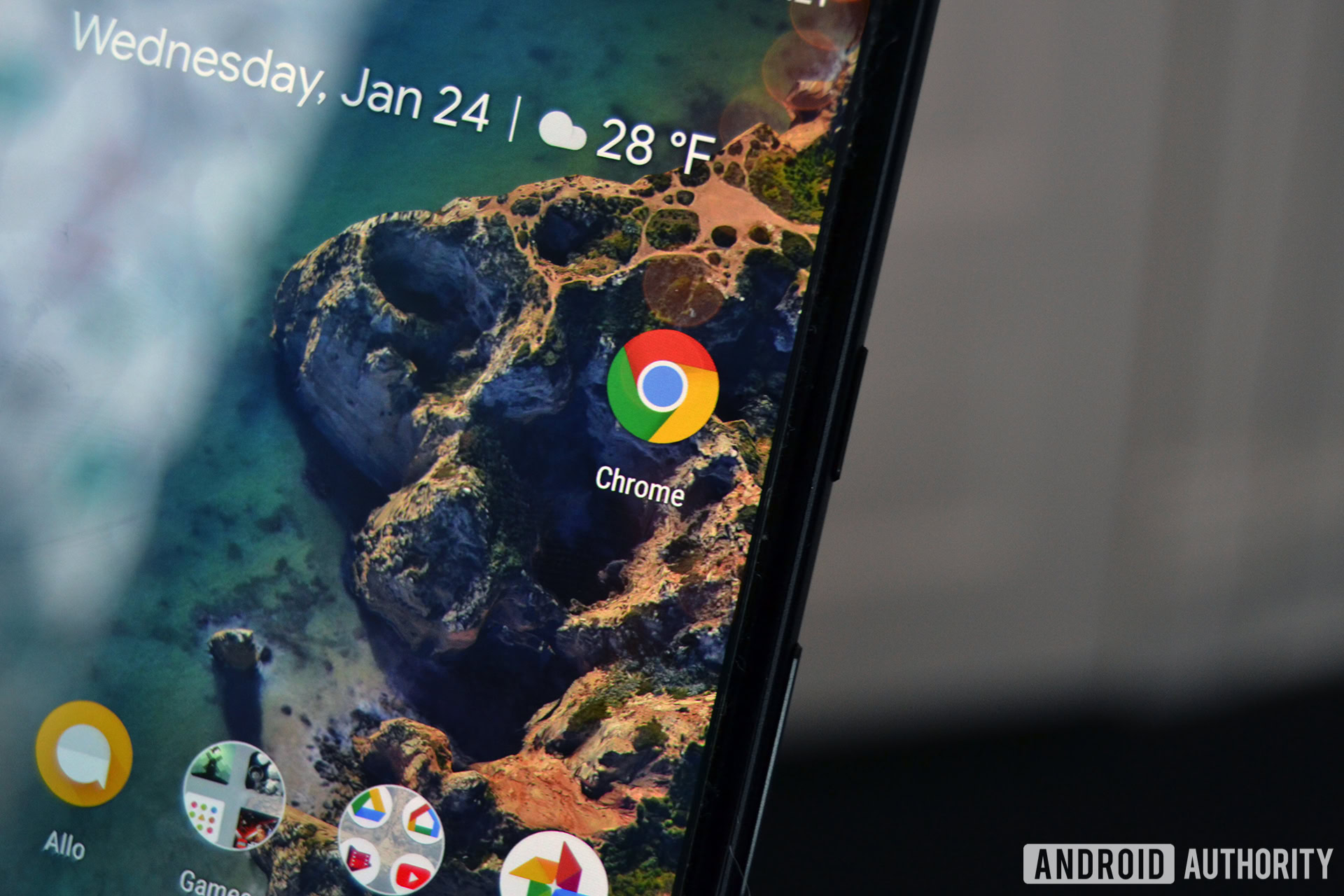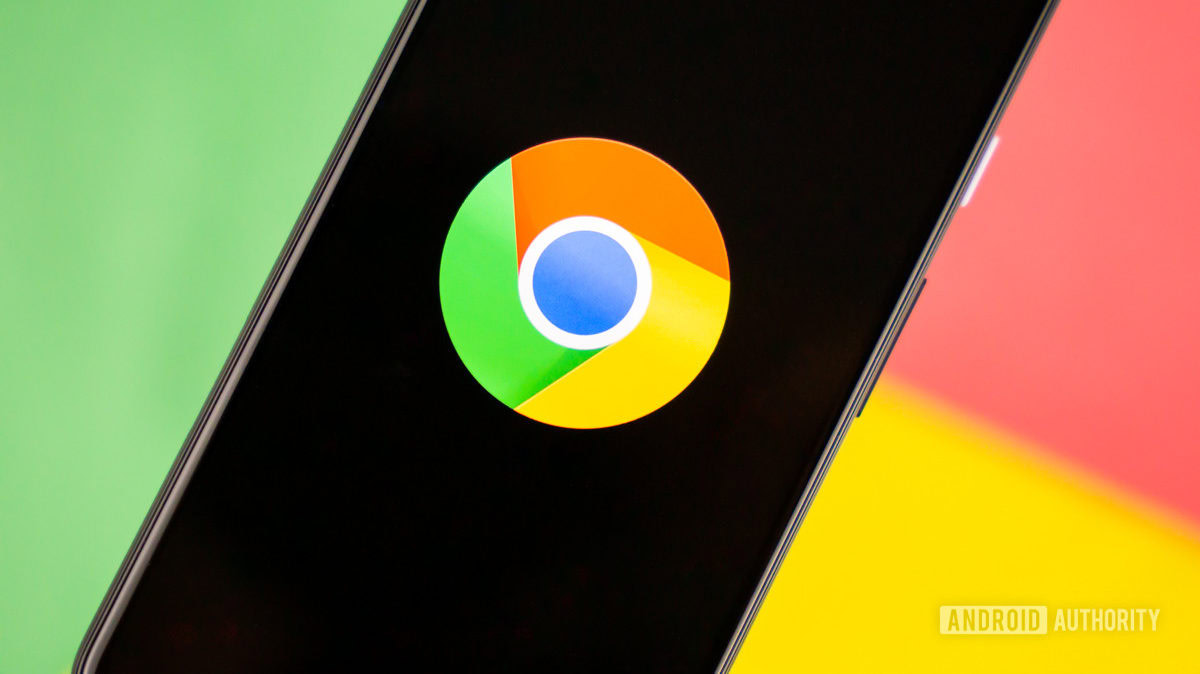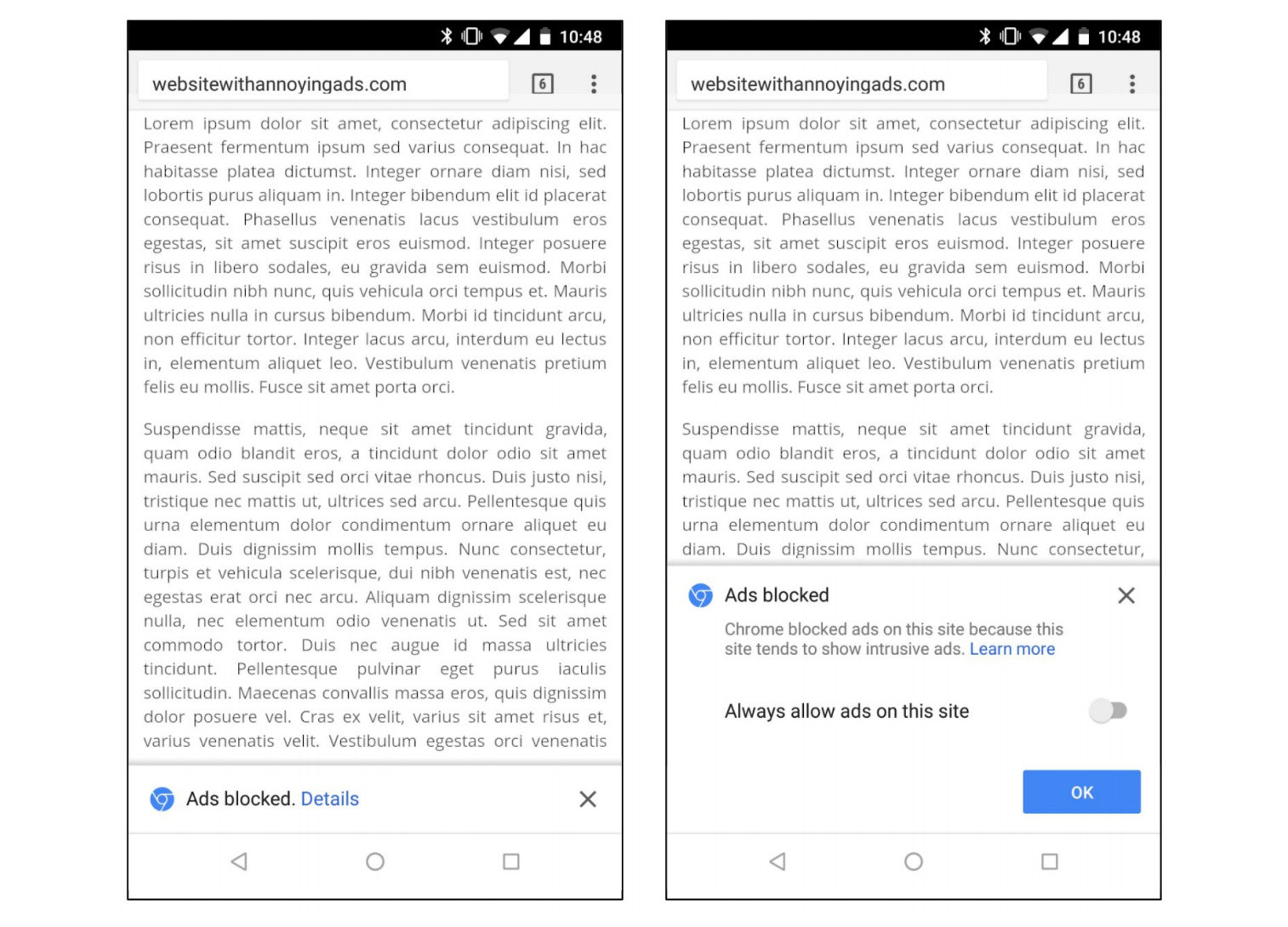Affiliate links on Android Authority may earn us a commission. Learn more.
Chrome will start blocking disruptive ads tomorrow - here's how it'll work
Published onFebruary 14, 2018

- Google is ready to launch the Better Ads Standards for Chrome browser tomorrow (February 15th).
- Ahead of the rollout, the search giant has detailed how the new standards will impact users and website owners.
- Websites with full-page ad interstitials, ads that unexpectedly play sound, and flashing (animated) ads risk being graded as “Failing” and having all ads blocked in Chrome after a 30-day warning period.
Google’s mission to rid intrusive, disruptive advertising from its Chrome browser is about to kick into high gear with the launch of the Better Ads Standards. Ahead of the initiative’s rollout tomorrow, the search giant has provided a little more detail as to how the scheme will impact Chrome users and website owners.
Announced last June, Google’s new advertising standards are based on public, consumer-driven research by the Coalition for Better Ads group. As the name suggests, this isn’t an attempt to purge the web of all advertising.

Instead, Google is looking to erase the kind of advertising that negatively affects the end user’s experience and drives them to install ad-blocking extensions that reduce the flow of revenue to publishers and, to quote Google, threaten “the sustainability of the web ecosystem”.
There are three main types of ads that are targeted by the new standards: full-page ad interstitials, ads that unexpectedly play sound, and flashing (animated) ads.
A Google blog posted earlier today notes that these types of bothersome ads are, in most cases, controlled by website owners. Under the new measures, if a poor ad experience is spotted in Chrome – either on desktop or mobile – it will be the website owner’s responsibility to address the offending adverts.
Sites are graded on a three-tier system based on an unspecified number of pages. The three possible statuses are Passing, Warning, or Failing. Website owners will be able to access a detailed Ad Experience Report via Google’s Search Console which shows individual violations and an option to request a re-review. A general list of reports will also be widely available via an Ad Experience Report API.
In a scenario where a website does not adhere to the Better Ads Standards after a strict 30-day deadline, Chrome will automatically block ads on the site until the intrusive ads are removed.
For end users, almost all of this work will go on behind the scenes, as Chrome’s ad filters will recognize websites with a Failing rating and block network requests for images or Javascript when loading a page, effectively removing the ads entirely.
When this happens on mobile, a notification will pop-up like the one in the example image below, while on desktop, a message will appear in the address bar. It’s worth noting that the ad blocker can be overridden on either platform.

Google says that just under half (42 percent) of the sites it judged as failing Better Ads Standards prior to the full rollout chose to address the issues and are now in the clear.
With billions of Chrome users worldwide, it’s not hard to see why website owners would be so eager to stick to Google’s new guidelines. The risk of losing advertising revenue via the most popular web browser (by quite a distance) is a significant threat. Likewise, having your website named and shamed in obvious ‘this website has bad ads’ pop-ups isn’t a great look either.
What do you think of the changes? Let us know in the comments below.